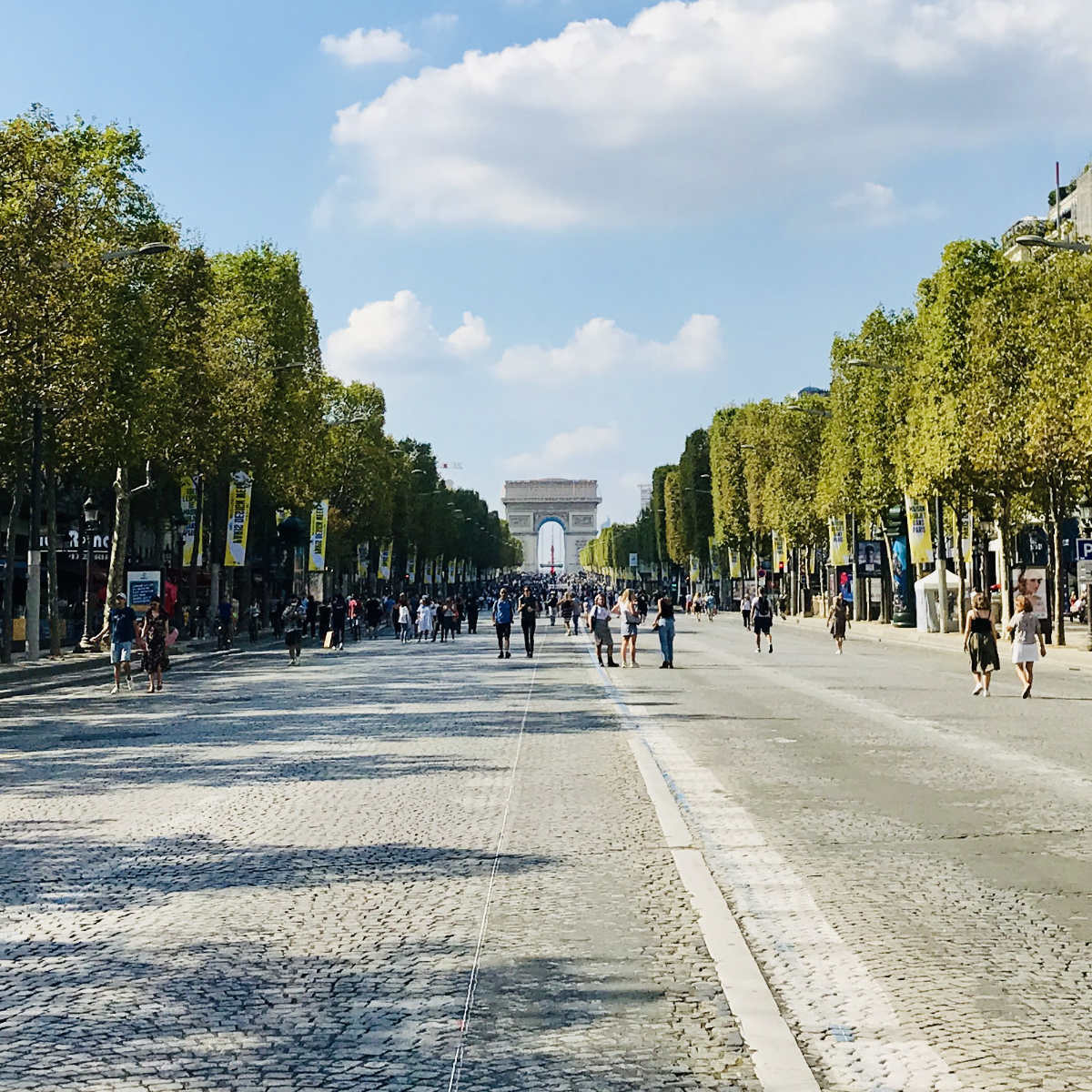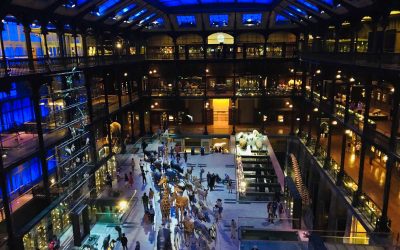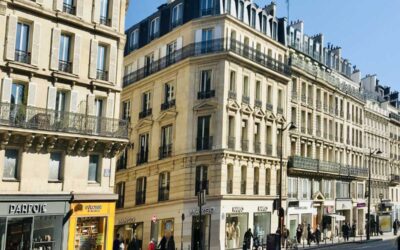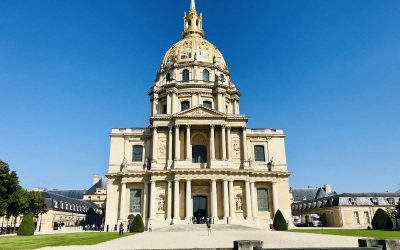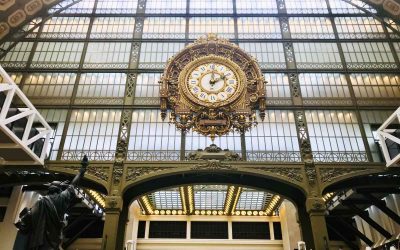The Avenue des Champs-Élysées is that dazzling gem, where every self-respecting visitor to Paris yearns to walk around like in a French perfume commercial.
There is no doubt that there was a competition for the most famous and beautiful street in France, the Avenue des Champs Elysées would win without contest. Located in the 8th arrondissements of Paris, the street has become famous for that ideal vie à la française.
While some local Parisians might scoff at the idea of window shopping at those luxury boutiques and dining at an overpriced but elegant café, the Champs Elysées has become one of the most visited tourist attractions in the country.
The street has become so ingrained in pop culture, there was even a famous song about it by French singer Joe Dassin. And if you are visiting Paris, this is likely near the top of your things to do in the City of Lights.
So let’s explore how the Champs Elysées came about, and what there is to do and see in the area, shall we? Allons-y!
- Meaning in English
- Construction and History
- Axe Historique: From Place de la Concorde to Arc de Triomphe
- Where to stay: Hotels and accomodation
- Where to eat: Cafés and Restaurants
- Flagship shops
- Bars & Nightlife
- Statues of Presidents and Prime Ministers
- Presidential Palais d'Elysées
- Petit Palais and Grand Palais
- Tour de France and Bastille day Festivities
- Christmas time
Meaning in English
The name Champs Elysées is French for “Elysian Fields”, the place of burial for dead heroes in Greek mythology. So in essence, it means “burial place of heros” in English.
This area used to be located Paris’s city walls, and used to be farmland and marshes. Ancient Romans who had their stronghold in Ile de la Cité and required burials outside the city limits, hence the name.
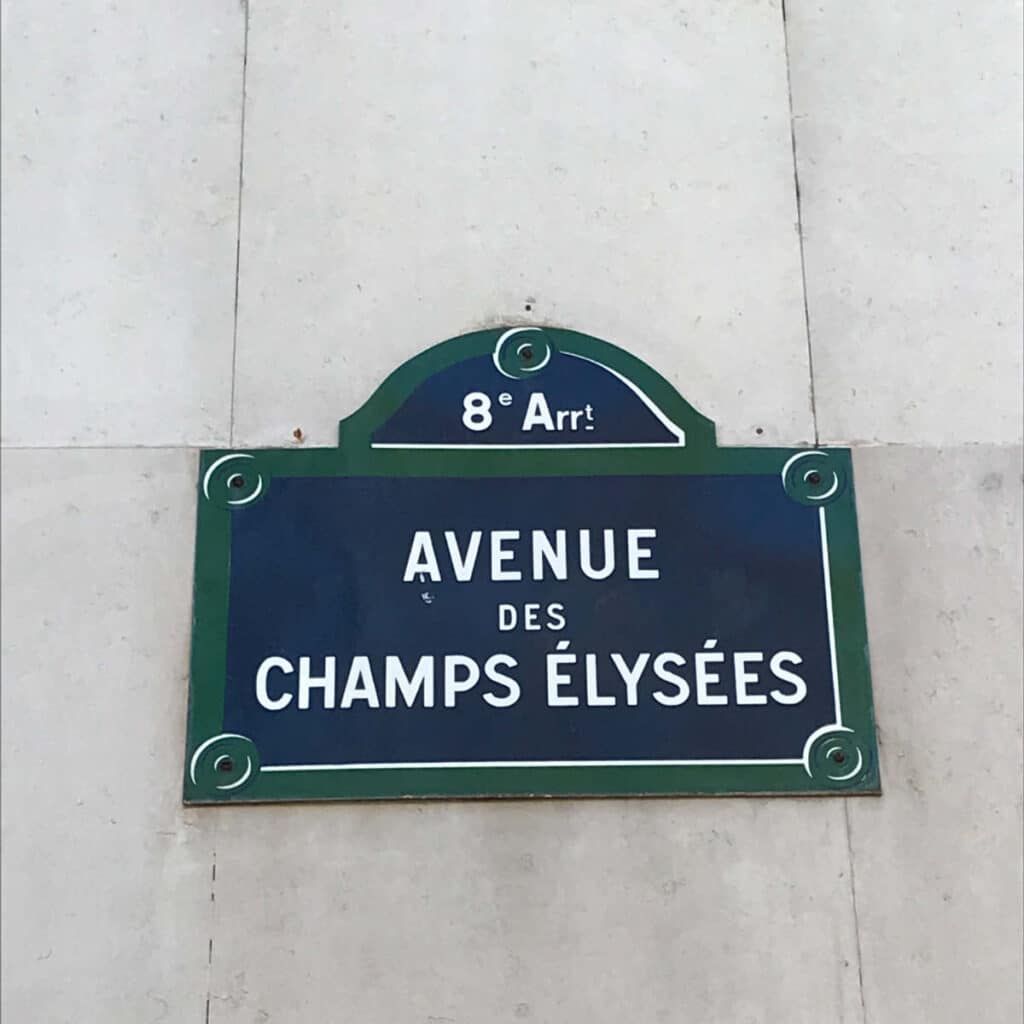
Construction and History
The Champs-Élysées and its gardens were originally laid out in 1667 by famed architect André Le Nôtre as an extension of the Palais des Tuileries and its gardens for Sun King Louis XIV.
In the 18th century, the road was extended first to Place de l’Etoile and then to Porte Maillot. Later in 1806, Napoleon Bonaparte ordered the construction of the Arc de Triomphe which gave the avenue a large focal point.
When Napoleon’s nephew Emperor Napoleon III came to power in the mid-19th century, he ordered the grand reconstruction of Paris, widening the Champs Elysées and removing all the old medieval buildings.
It soon became the place to see and be seen for the French bourgeoisie, with private homes and hotel particuliers (mansions) spanning either side of the grand evenue. Today, this is the most expensive address in all of France.
Axe Historique: From Place de la Concorde to Arc de Triomphe
While the road extends in a straight line for several miles, the Avenue de Champs Elysées is only 1.2 miles (1.9 km) long. The name is restricted to the portion of the boulevard between Place de la Concorde and the Arc de Triomphe.
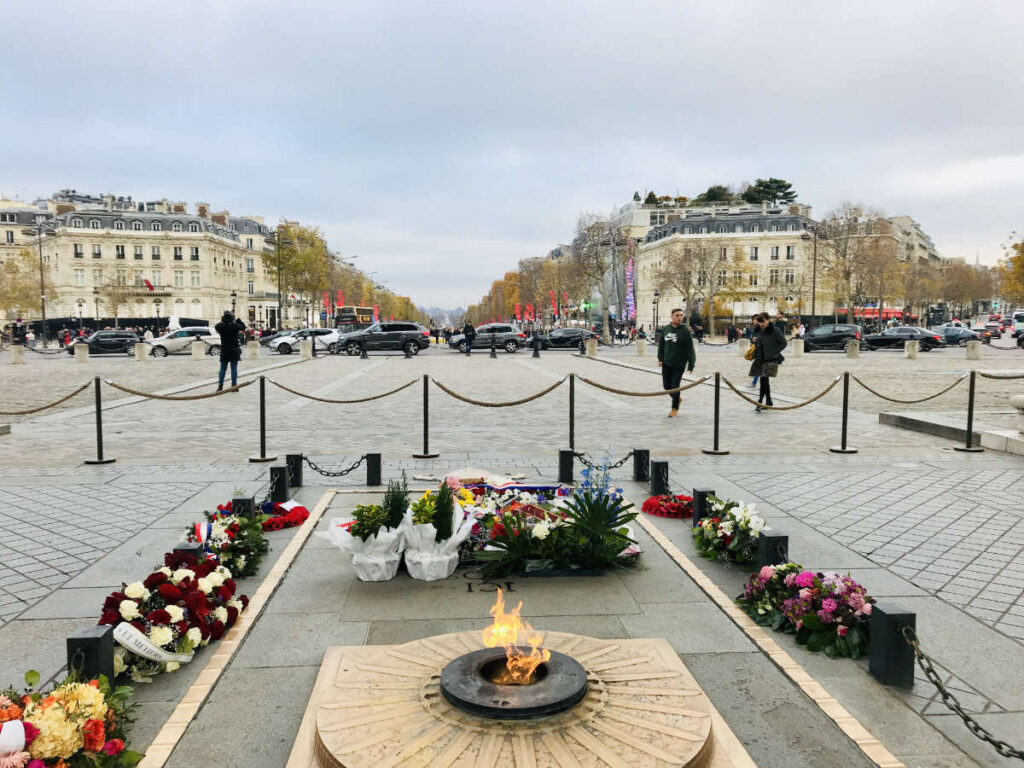
It is at the Place de la Concorde during French revolution where the French royals were beheaded at Place de la Concorde. At the other end, the Arc de Triomphe which has become a national symbol of France.
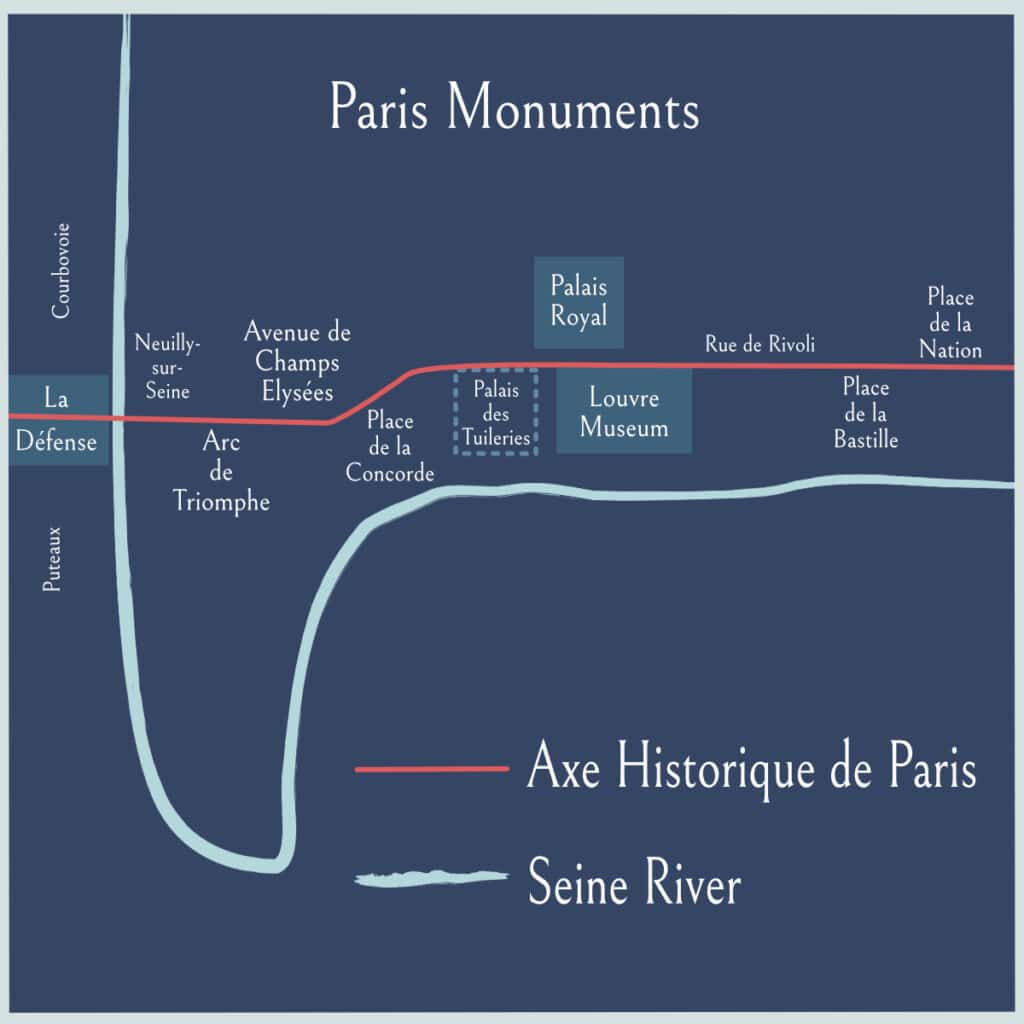
The Champs Elysées itself is part of the Axe Historique de Paris, based on the old “Voie Triomphale” or “Triumphal Way”, an old historic Roman road that existed in Italy. You can read more about the history of Paris here.
Where to stay: Hotels and accomodation
This area of Paris is the most expensive in all of France, with hotels and rents in the area reflecting as such. For luxury and the haut de gamme, some recommended hotels in the area are:
- €€€€ – Hotel Le Marianne
- €€€€€ – Four Seasons Hotel George V Paris
- €€€€€ – Hotel de Crillon
You can find more accommodation options for the area here.
Where to eat: Cafés and Restaurants
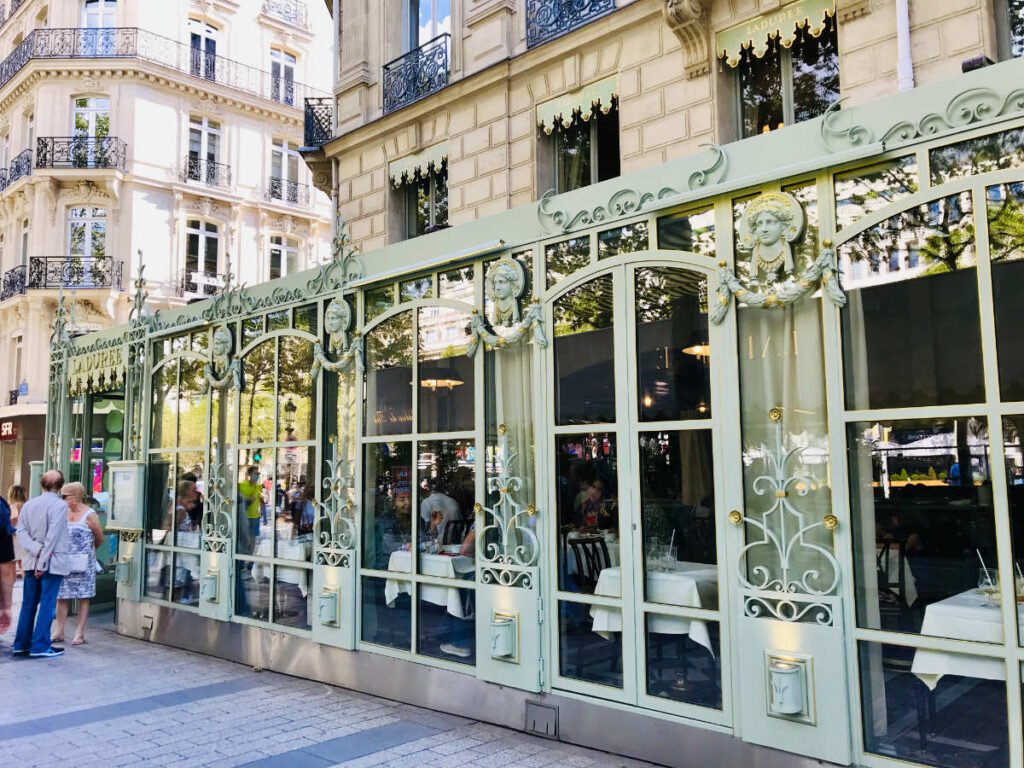
As you can imagine, there are a lot of wonderful haut de gamme and Michelin star restaurants around the Champs Elysées. Some of the most famous names include:
- Ladurée – cafe and tearoom – 75 Av. des Champs-Élysées
- Brasserie Fouquet’s – historic famed restaurant – 99 Av. des Champs-Élysées
- L’Atelier de Joël Robuchon Étoile – Michelin star chef – 133 Av. des Champs-Élysées
- Le 39V – rooftop haute cuisine – 39 Av. George V, 75008 Paris
Flagship shops
Most locals don’t usually head to the Champs Elysées to shop, since it can get rather crowded, but if you are looking for a place to see the flagship store of a particular French brand, the Champs Elysées is your best bet.
Along with Avenue Montaigne, the Champs Elysées and the surrounding area is considered the Triangle d’Or (Golden Triangle), with flagships of many French luxury houses such as Chanel, Louis Vuitton, etc. There are also many affordable French brands in the area.
And if you are a football fan, check out the Paris Saint Germain football team’s souvenir shop that is on the Champs.
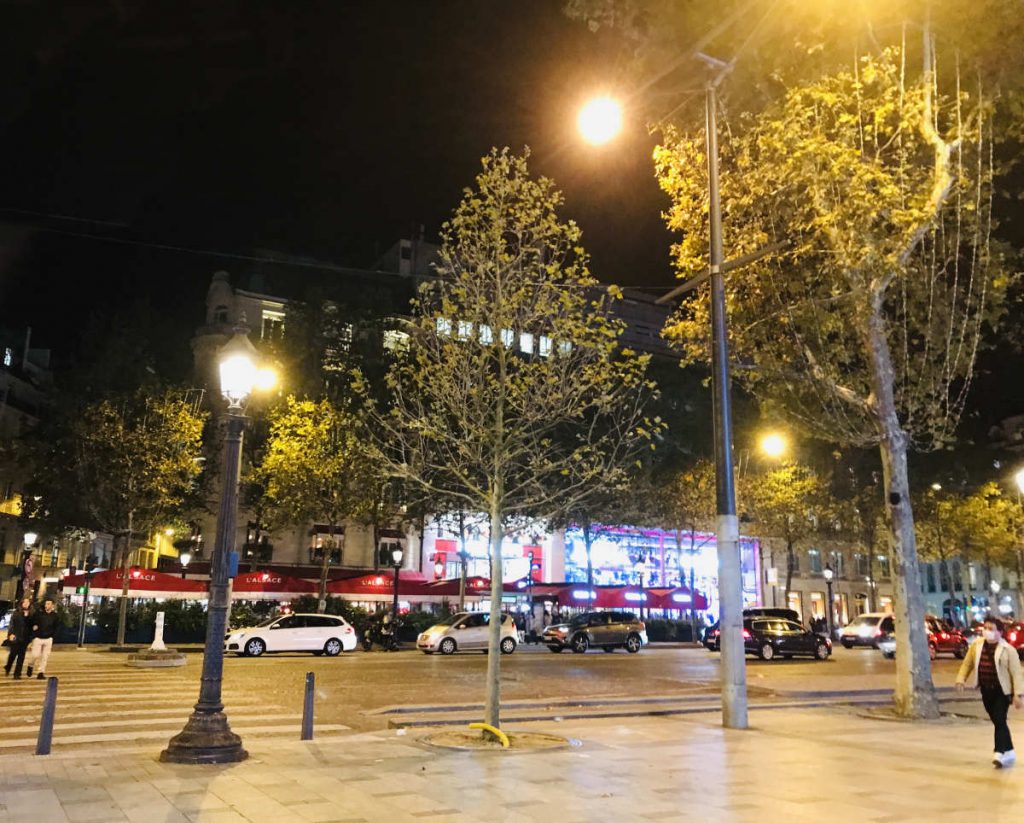
Bars & Nightlife
There are several bar and nightlife options near the area around the Champs Elysées including:
- Buddha Bar (upscale restaurant and bar) – 8-12 Rue Boissy d’Anglas, 75008 Paris
- Gigi Maison Blanche (rooftop panoramic restaurant and bar) – 15 avenue Montaigne, 75008 Paris
- Verde by Yeeels (upscale bar and restaurant) – 24 Avenue George V, 75008 Paris
You can find more bars and nightlife options around Paris here.
Statues of Presidents and Prime Ministers
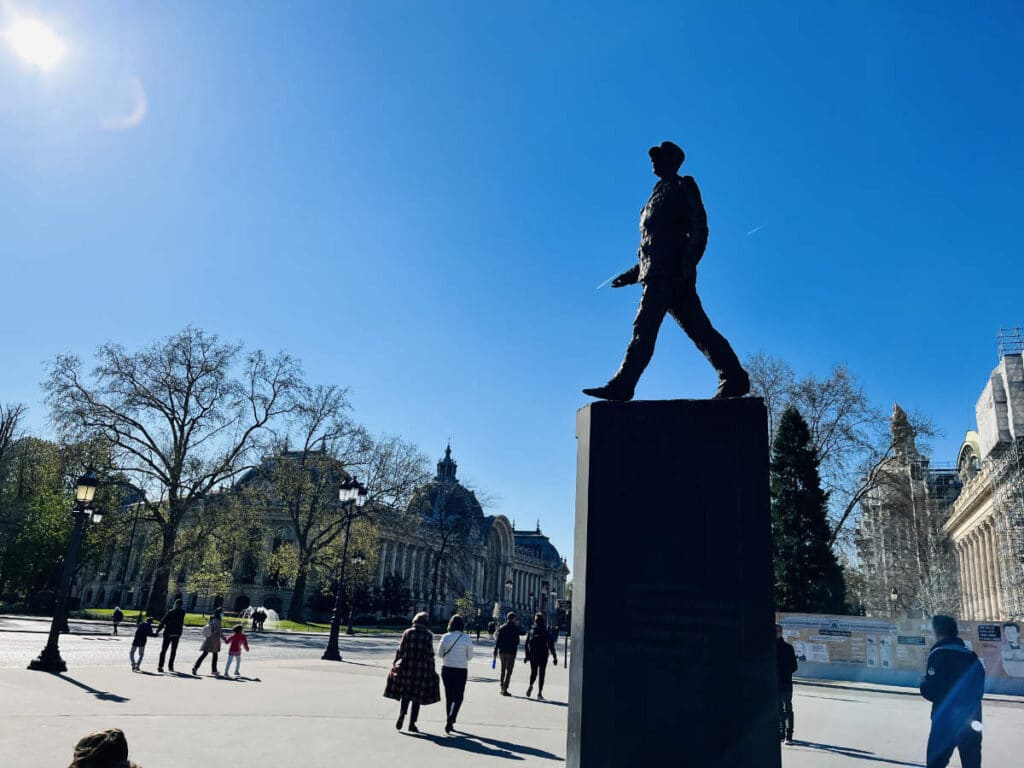
In the portion of the Champs Elysées next to Place de la Concorde, you will notice that there are several commemorations dedicated to the military leaders during WWI and WWII. Among them you will find:
- Statue of Georges Clemenceau – Prime Minister of France and French advocate during WWI
- Statue of General Charles de Gaulle – leader of the French resistance during WWII and President of France
- Metro George V – British King during WWI
- Metro Franklin D. Roosevelt – American President during WWII
- Statue of Winston Churchill – British Prime minister during WWII (on the other side of Petit Palais)
- Monument to Jean Moulin – famed French resistance fighter during WWII
Presidential Palais d’Elysées
Just off the Avenue des Champs Elysées is the official residence of the President of France, the Palais de l’Elysées. It is the back gardens of the Elysée palace that are a few meters away from the famed avenue.
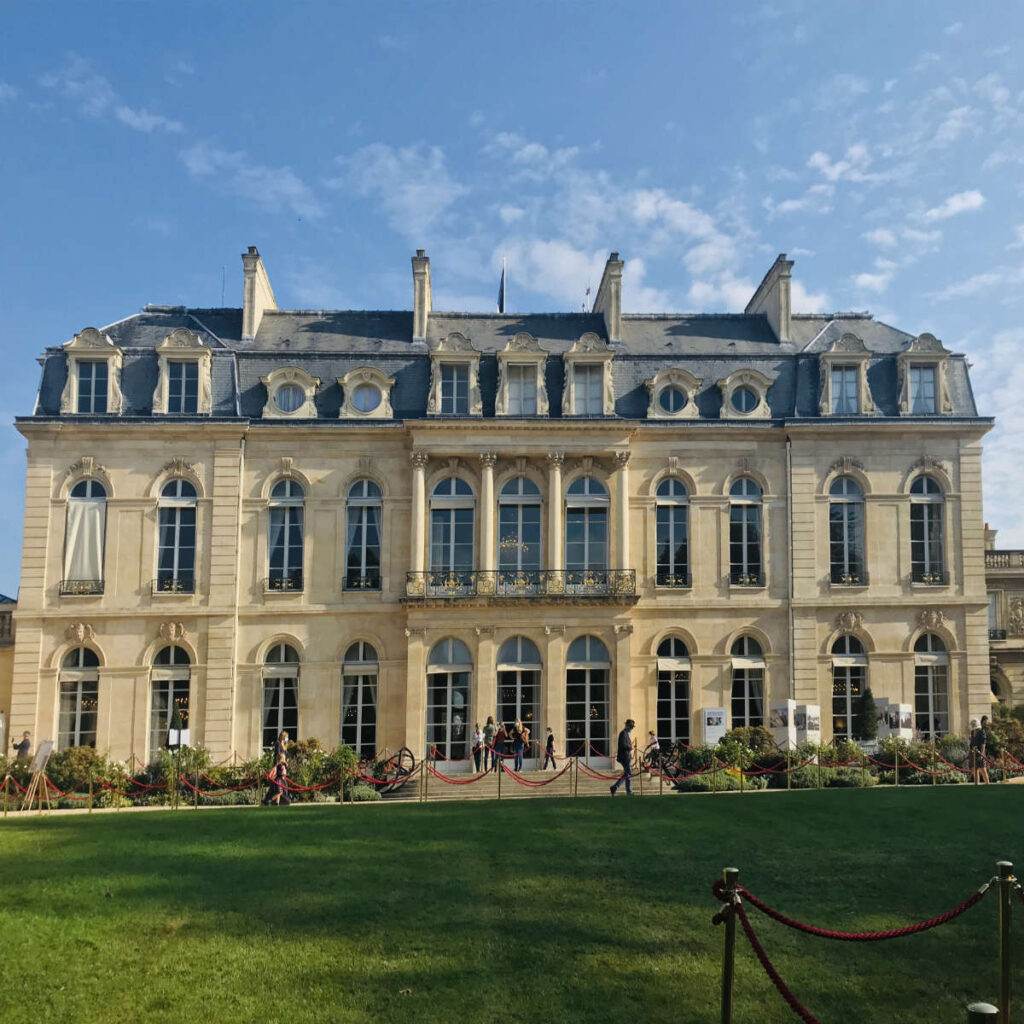
Unfortunately, Journée du Patrimoine, is the only day of the year that it is open, for security reasons. If you do happen to be in Paris in September, do visit inside if you can.
Petit Palais and Grand Palais
At the corner Franklin Roosevelt metro on the Champ Elysées are two grand buildings called the Grand Palais and the Petit Palais.
The Grand Palais is an exhibition hall and is famous as the place where Chanel usually presents its fashion show défilé. In winter time, it bills itself as the world’s largest indoor ice rink, lit up under an incredible glass roof.
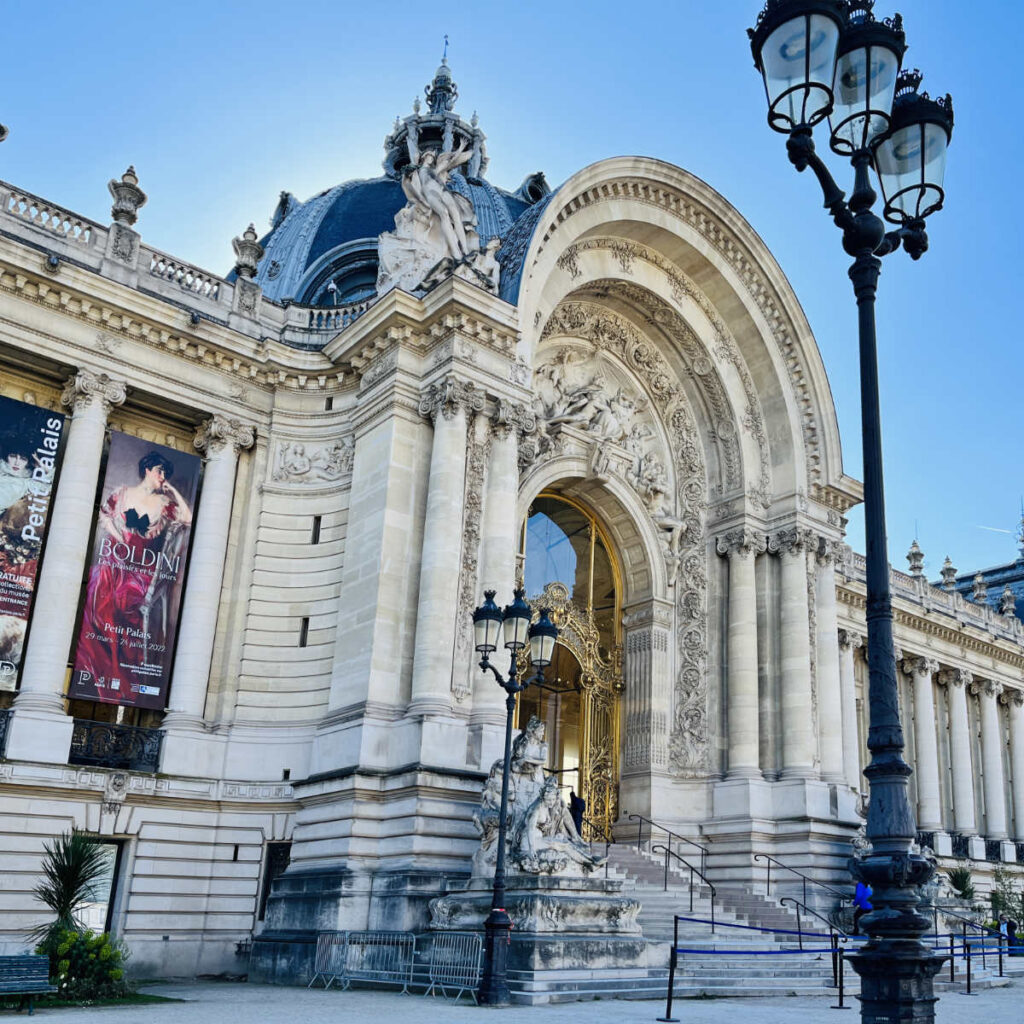
Directly across the Grand Palais, is the Petit Palais. It is a small art museum which holds a collection of medieval paintings as well as more recent works from the likes of famous artists like Rembrandt, Rubens, Delacroix, Monet, Pissarro, Cézanne, Modigliani, Rodin and more.
Tour de France and Bastille day Festivities
Bastille day (14 Julliet) is celebrated in Paris with a morning military parade around the Arc de Triomphe and on the Champs Elysées.
If you want to see army tanks, troops with weaponry, firetrucks, and other governmental units who are France’s first line of defense, this is the place wave your French flag and watch. With planes, helicopters, and fighter jets joining overhead, it is a sight to behold.
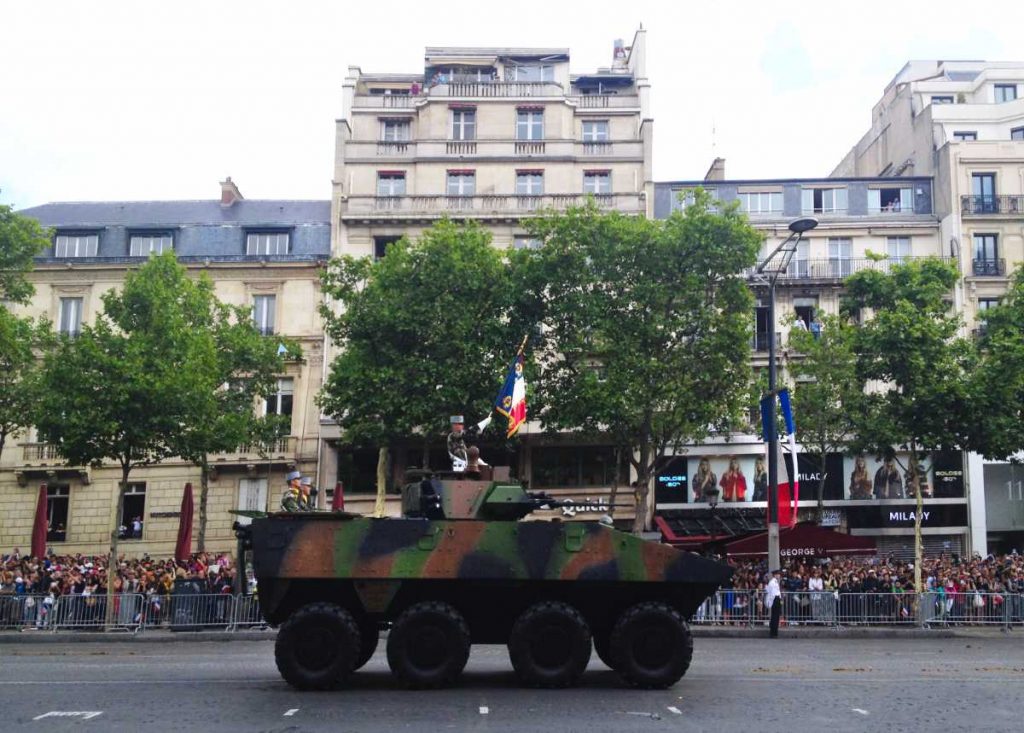
The annual bike race the Tour de France which is held a couple of days before the 14th of July, also has its grand finish on the Champs Elysées.
For the final stage, riders ride now a total of 8-10 laps from around the Arc de Triomphe, down the Champs-Élysées, round les Tuileries and the Louvre and across the Place de la Concorde back to the Champs-Élysées, before being crowned champion.
Christmas time
Every Christmas, the Champs Elysées lights up to welcome people celebrating the end of the year and shoppers looking to fill up their stockings. Paris’s Christmas market is usually held annually either along the Champs Elysées or just beyond at the Place de la Concorde in Tuileries gardens.
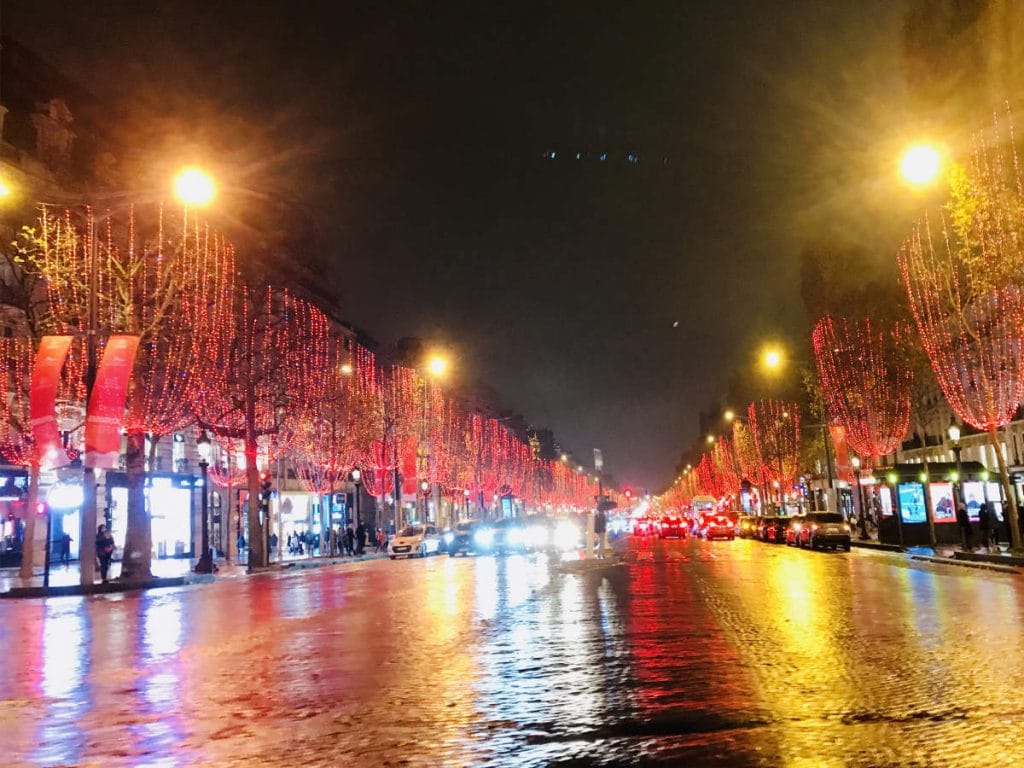
It is a wonderfully festive time of the year, with lights all along the famed street. In addition, crowds usually gather on the Champs Elysées to countdown to the year end on New Year’s eve with a light and music show.

If you enjoyed that article, you may like to read more about things to do in Paris. A bientôt!
